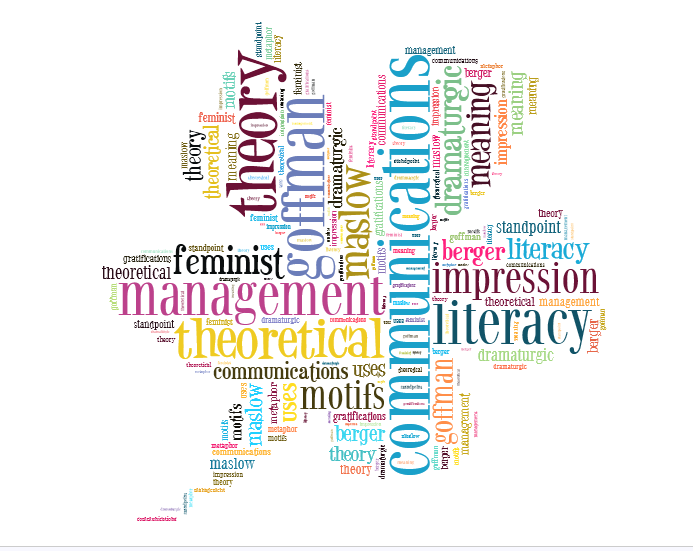 The cornerstone of the Queens University of Charlotte Master of Arts in Communications program is communications theory. Throughout the program we developed our theoretical literacy within the communications discipline.
The cornerstone of the Queens University of Charlotte Master of Arts in Communications program is communications theory. Throughout the program we developed our theoretical literacy within the communications discipline.
What is Theoretical Literacy?
Theoretical literacy is best explained as the ability to articulate a theoretical framework and apply the framework to a real-life communications challenge.
How did I develop my theoretical literacy? (So What?)
Throughout the program we learned about communication theory and how to apply the theory to real-life situations. There are three aspects to the program that come in mind in regards to honing my ability to understand and apply communications theory. These include:
- Writing a Literature Review
I remember my first literature review was in my first course in the program, COMM 601. I wrote a literature review and completed a digital media project regarding equipment for living in the movie Forrest Gump. My first experience in writing a literature review was eye opening. I remember Dr. Pupchek telling me, “Remember to keep the sections of your literature review separate, just like the foods on a children’s plate. Keep the peas separate from the carrots,” (Pupchek, 2013, personal communication). After the feedback from my first literature review, I improved my form and ability to keep my opinion separate from a review of the literature. The literature review is a critical component in understanding the communications theory behind common communication challenges. The literature review helps a communications scholar understand both current research in the field of study, as well as gaps. I found the Guidelines for a Good Literature Review particularly helpful in improving my craft.
- Connectivity Plan
The connectivity plan that I created in COMM 658, Creativity and Networks, with Dr. Stavroula, was particularly insightful in helping me connect communications theory with real-life communication challenges. In this course I created a connectivity plan: “How self-published authors can connect on Twitter”. The audience for this project was self-published authors. I conducted an extensive analysis of how self-published authors could use Twitter to help build their brand. I used Goffman’s (1959) sociological theory of impression management to understand how to apply the theory to the plan. What I learned most throughout this project was to not jump ahead to solutions prior to letting the theory guide the work. The most important component of theoretical literacy is to approach research with an open mind and let the literature on the theory guide the research. Also, pose questions to guide the research, but don’t enter the research with a pre-determined solution. This project was eye-opening to help me better understand how to apply theory to real-life problems.
- Final exam
The final exam in the program was the ultimate test in applying theory to practice. First, my cohort developed a communications study guide for all of the communication theories that we learned throughout the program. Each student in the program contributed to the study guide and this helped us immensely in honing our theoretical literacy. As we explored each theory, we were able to dig through our files and remember what we wrote about each theory and how we applied it.
Secondly, the final exam itself was immensely helpful in applying theory to practice. The exam contained a case study of Starbucks experiencing a communications crisis in which protestors launched a campaign against Starbucks for not allowing breastfeeding in their stores. I was able to apply Goffman’s Theory of dramaturgic metaphor to the case study. During the exam, I was able to articulate each component of Goffman’s Theory of dramaturgic metaphor and apply the specific components of the theory to the proposed solution.
Now what?
The learnings throughout the program on theoretical literacy have changed my outlook to addressing a communications challenge. Previously, I would approach a communications challenge and immediately begin looking at possible solutions. However, I’m now able to take a step back and use the lens of a communications theory to develop the solution to the challenge. This is particularly helpful in my professional career as a communications manage for a Fortune 500 company. One recent example of how I can apply theory to practice in my professional life is through a volunteer program I lead that connects women in technology. One area the women want to grow is in their communications style with leadership. I am able to use the lens of feminist standpoint theory and Goffman’s Impression Management to help the women in the company understand how they can expand upon their careers in a male-dominated industry (technology). Instead of approaching the challenge by immediately proposing a solution, I’m able to use the lens of the theoretical framework to examine the problem and recommend a solution.

